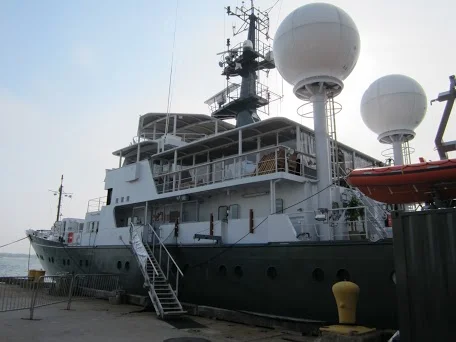Two researchers from the University of Georgia - Post Doc Sara Kleindienst and PhD student Maggie Esch - are part of a twelve person science team led by chief scientist, Ian MacDonald (Florida State University), that is sailing on board the research vessel Falkor to study the repercussions of the Macondo blowout on Gulf of Mexico benthic ecosystems. The cruise will sail between Nov. 6 and Nov. 28, 2012.
ECOGIG Cruises: Spring-Summer 2012
Our new Gulf of Mexico research project—“ECological Impacts of Oil and Gas Inputs to the Gulf”—will involve at lot of time at sea over the next few years. The project had its first cruise on board the R/V Endeavor in April 2012 and successfully deployed two instrumented landers for long-term monitoring of seafloor-water column chemical exchange. Johanna Schweers represented the Joye group on the cruise.
Research and resources
During the summer of 2011, the group will participate on two research expeditions to the Gulf of Mexico to further explore the distribution and fate of oil in the deepwater sediments and to monitor the activity water column and benthic microorganisms. These expeditions will provide another time point in the extensive time series data set we have accumulated pre- and post- Macondo Blowout.
Some new info
Today I did a "Cover it live" chat with Erik Stokstad from Science Magazinediscussing some of our recent findings related to the BP oil well Blowout. For any of you who might be interested, you can replay the chat here. Our papers related to our blowout work are starting to come out as well. The first one was just published in Nature Geoscience last week.
You don't belong here
Seafloor “cold seeps” are areas where cool fluids from the deep subsurface are leaking out of the seafloor. The temperature of these fluids is usually less than 20ºC. Most methane-fueled or methane and oil fueled cold seeps share some common features, such as gas vents or bubble streams, gas hydrate mounds, microbial mats, and chemosynthetic animals and associated heterotrophic fauna. The biological and chemical diversity of these habitats is high.




